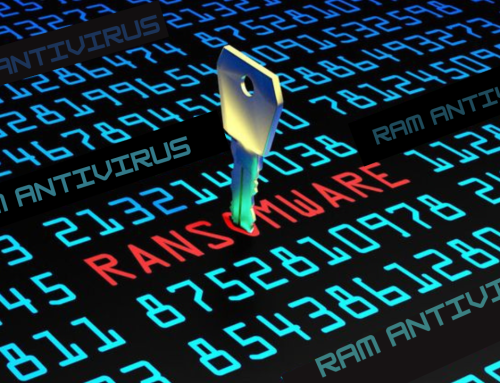Explore the world of free YARA-based cyber threat intelligence tools and scripts
YARA threat intelligence is a powerful, flexible, open-source tool used to detect and classify malware, as well as identify patterns in files, network traffic, and other digital artifacts. Developed in 2011 by VirusTotal, YARA works by defining rules that describe the characteristics and attributes of a particular type of malware or other threat. So the rules, identify the threats or discover new, previously unseen threats.
The YARA language design is simple and intuitive. So flexible enough to handle complex and dynamic threats. It supports pattern matching using regular expressions, and string manipulations. Boolean operators and allows the creation of custom functions and modules. Additionally, YARA supports the use of wildcard expressions, hexadecimal strings, and various other data types, making it a versatile tool for cyber threat intelligence professionals.
Another important feature of YARA
Another important feature of YARA is its ability to integrate with other tools and systems, making it a valuable part of an overall cybersecurity strategy. For example, YARA integrates with intrusion detection systems, sandboxes, and film scanners to provide automated, real-time threat detection and classification. Additionally, YARA can analyze and sort massive amounts of data, enabling cyber threat intelligence professionals to quickly and effectively identify and respond to threats.
In conclusion, YARA is a powerful and versatile cyber threat intelligence language that provides the tools needed to detect and classify malware and other threats. Whether you are a seasoned cybersecurity professional or just starting, YARA is an essential tool in your toolbox.
In this article, we’ll take a closer look at some of the free tools and scripts available for cyber threat intelligence based on the YARA language.
YARA-SCANNER
YARA-SCANNER is a simple but effective tool for running YARA rules on a file directory. So This is a great option for users new to YARA, as it provides an easy way to start with YARA. Then YARA-SCANNER is particularly useful for incident response, as it allows security analysts to quickly identify malicious files in a compromised environment.
YARAC
YARAC (YARA Rules Compiler) is a graphical user interface (GUI) for YARA that allows users to create and manage YARA rules. With YARAC, users can create YARA rules in a visual and user-friendly way, without having to write code. So YARAC also includes a library of pre-written YARA rules, making it a great starting point for new YARA users.
YARGEN
YARGEN is an open-source tool that generates YARA rules from malware samples. So It allows users to generate YARA rules based on various malware characteristics, such as strings, PE headers, and other data. YARGEN is a powerful tool for generating YARA rules. But it uses for other purposes. Then generating rules for network intrusion detection systems.
YARAScanner
YARAScanner is a free and open-source tool for scanning and analyzing files with YARA rules. Then this is a great option for security analysts who need to quickly identify malicious files in a directory. and it is also useful for incident response. YARAScanner provides a simple interface for scanning files and also provides detailed information about the YARA rules corresponding to each file.
YARA RULES
YARA-RULES is a repository of YARA rules. that has used to detect malware and other malicious files. The repository includes rules for various malware families, including banking Trojans, ransomware, and APTs. The repository is constantly updating and maintaing by a community of security researchers, making it a great resource for users who want to keep their YARA rules up to date.
Yara-Signer
Yara-Signator is a script that automates the process of creating Yara signatures for malware. So The script is particularly useful for security researchers trying to analyze new malware samples, as it can generate Yara signatures quickly and easily. The script is free and open source and runs on Windows, Linux, or macOS systems.
Yara GUI
Yara GUI is a graphical user interface for Yara, which allows users to create, edit and manage Yara rules. The tool is particularly useful for those new to Yara, providing an easy-to-use interface for working with Yara rules. So The tool is free and open source and runs on Windows, Linux, or macOS systems.
MalwareBazaar
MalwareBazaar is a repository of malware samples, along with associated Yara rules. for different types of malware. The repository is free and open source. And it is regularly updating by a community of security researchers. The repository is a valuable resource for those looking to analyze new malware samples, as it provides access to a large collection of malware samples and Yara rules.
Yara Management Console
A Yara Management Console is a centralized tool for managing Yara rules and results. Then It is using to organize, update, and share Yara rules, as well as view the results of Yara analytics. Some popular Yara management consoles include Yara-MMC and Yara Rules Manager.
Yara Editor
A Yara editor specializes in text editors designed to work with Yara rules. It provides features like syntax highlighting, rule templates, and code completion, making it easier to write Yara rules. Some popular Yara editors include Notepad++, Sublime Text, and Visual Studio Code.
Yara Compiler
A Yara compiler is a tool that converts. Because Yara rules into a format, that using by Yara scanners. So This allows Yara rules to distributing and use across various platforms and systems. Some popular Yara compilers include PyYara and Yara-Python.
Yara Rules Builder
A Yara Rule Generator is a tool that can automatically generate Yara rules based on malware samples. This can be a significant time saver for cyber threat intelligence professionals who want to quickly create Yara rules without having to manually write them themselves. Some popular Yara rule generators include Cuckoo Sandbox and YaraGen.
Yara Analyzer
Yara Analyzer is a tool that will have used to perform static analysis on malware samples and detect any known malware family using Yara rules. Then This tool helps identify the specific malware family and provides valuable information to the user.
YaraVault
YaraVault is a centralized repository of Yara rules that will have used by Cyber Threat Intelligence professionals to store and share Yara rules. This tool provides a centralized location to store Yara’s rules, making rules easier to maintain and share.
Yara Gazer
Yara-Gazer is a tool that can be used to monitor and analyze network traffic for malicious activity using Yara rules. This tool helps identify and isolate malicious activity, making responding to and preventing cyber threats easier.
Yara-Doctor
Yara-Doctor is a tool that can be used to diagnose and repair Yara rules. This tool helps ensure that Yara rules work properly, making detecting and responding to cyber threats easier.
Yara-Net
Yara-Net is a tool that can be used to detect and analyze network-based threats using Yara rules. This tool provides valuable insights into network-based threats, making it easier to respond to and prevent cyber threats.
Yara-Miner
Yara-Miner is a tool that will have used to extract information from malware samples and create Yara rules based on this information. This tool helps identify patterns in malware samples and generate Yara rules to detect similar samples in the future.
Yara-Hunter
Yara-Hunter is a tool that can be used to scan and detect malicious files and malware using Yara rules. This tool helps identify malicious files and malware, making it easier to respond and prevent cyber threats.
Yara-Sheriff
Yara-Sheriff is a tool that can be used to apply Yara rules in a sample set. This tool helps ensure. Then Yara’s policies are followed, making. So it is easier to detect and respond to cyber threats.
Yara-Watchdog
Yara-Watchdog is a tool that can be used to monitor malicious activities on a system and detect them using Yara rules. This tool helps detect and respond to malicious activities, making it easier to prevent cyber threats.
Other resources
Cyber threat professionals have access to a wealth of Yara language resources that can assist them in their efforts to detect, analyze and respond to cyber threats. Here’s a list of some of the most useful resources, including documentation, tools, and tutorials:
- Yara Documentation: The official Yara documentation provides comprehensive information about the syntax, rules, and functions of the language. This is a great starting point for those looking to learn Yara or improve their skills.
- Yara GitHub Repository: The official GitHub repository for Yara contains the project’s source code, as well as sample Yara rules and scripts. This is a great resource for those looking to contribute to the project or learn from the work of others.
- Yara Community: The Yara Community is a vibrant and active group of users who share language tips, tricks, and ideas. The community is accessible through various online forums and mailing lists.
- Yara Tools: A variety of tools have been developed to help users work with Yara, including rule compilers, rule editors, and rule generators. These tools can make it easier to create and manage Yara rules, and they can be found through a simple web search.
- Yara Online Tutorials: Many online tutorials are available that provide step-by-step instructions for using Yara, as well as advanced techniques for using the language. These tutorials can be a great resource for beginners and experts alike.
- Yara Conferences and Workshops: Yara-relate conferences and workshops are held regularly and provide a great opportunity for users to meet, learn, and share knowledge with others in the field.
Using these resources helps cyber threat intelligence professionals understand Yara better. This knowledge enhances their ability to protect organizations from cyber threats.
Maximizing Yara’s Potential: A Guide to Essential Cyber Threat Intelligence Resources
As a powerful cyber threat detection and analysis tool, Yara language has become a must-have for many cyber threat intelligence professionals. However, with Yara’s growing popularity, it can be difficult to know where to turn for information and help. This article provides an overview of key resources for Yara users, including documentation, community support, tools, tutorials, and events.
Yara Documentation
- The official Yara documentation provides a comprehensive guide to the language’s syntax, functions, and rules.
- The Yara Handbook covers everything from installation to advanced rule-writing techniques.
- The Yara Wiki includes a wealth of information about the language, including use cases and examples.
Yara GitHub repository
- The official Yara GitHub repository is the source for the latest version of the software and is a great resource for developers and contributors.
- The repository also includes a collection of Yara rules and scripts that can be used for inspiration or learning purposes.
- The Issues tab of the GitHub page is a platform for users to report bugs, request features, and share ideas.
Yara Community
- Online forums, such as Reddit and Stack Overflow, provide a platform for Yara users to share tips, and tricks, and ask questions.
- Mailing lists, such as the Yara-rules mailing list, allow users to communicate directly with other Yara users and developers.
- Conferences and workshops are opportunities for Yara users to meet, learn, and network with others in the field.
Yara Tools
- Yara rule compilers, such as PyYara, are used to compile Yara rules into a format that can be run by Yara software.
- Rule editors, such as Yara-Editor, provide a user-friendly interface for writing and managing Yara rules.
- Rule generators, such as Yara-Gen, automate the creation of Yara rules, making it easier for users to create complex rules.
Yara Online Tutorials
- The Yara Blog includes articles and tutorials on a range of Yara-related topics, from beginner to advanced.
- YouTube tutorials, such as the Yara for Malware Analysis series, provide step-by-step guides for using Yara.
- Online courses, such as the Introduction to Yara course on Udemy, offer a comprehensive guide to the Yara language and its applications.
With these resources at hand, cyber threat intelligence professionals can fully exploit the potential of the Yara language and stay ahead of the latest threats. Whether you’re a beginner or an expert, these resources will help you stay informed about Yara and its use in cyber threat intelligence.
The Power of Yara for CTI with AI, Machine Learning and NLP
Cybersecurity threats are constantly evolving and becoming more sophisticated, making it increasingly difficult for organizations to protect their networks against these threats. The Yara language, originally designed for malware detection, has the potential to revolutionize the field of cyber threat intelligence by integrating advanced technologies such as artificial intelligence (AI), machine learning (ML), and programming neurolinguistics (NLP).
AI is a technology that allows machines to perform tasks that would normally require human intelligence, such as image recognition, language translation, and decision-making. By integrating AI into Yara, the language can be trained to detect and respond to cyber threats in real-time, making it more effective in detecting previously unknown or invisible threats. AI can also be used to automate the process of creating and updating Yara rules, allowing cybersecurity professionals to focus on more important tasks.
ML is a type of AI
ML is a type of AI that allows machines to learn and improve their performance over time. By integrating ML into Yara, the language can be trained to identify cyber threat patterns and adapt to the changing threat landscape, making it more effective in detecting new threats. ML can also be used to automatically categorize and prioritize threats based on their severity and potential impact, allowing organizations to respond to threats more effectively.
NLP is a field of computer science that focuses on the interactions between computers and human languages. By incorporating NLP into Yara, the language can be trained to understand and process natural language commands and queries, making it more accessible and intuitive for users. NLP can also be used to automatically extract information from unstructured data sources, such as log files and social media, to identify and respond to cyber threats.
The combination of Yara with AI, ML, and NLP has the potential to transform the field of cyber threat intelligence by providing organizations with a powerful tool to detect, analyze, and respond to cyber threats in real-time. Integrating these technologies into Yara allows organizations to leverage the power of cutting-edge technologies to protect their networks against cyber threats and stay ahead of an ever-changing threat landscape.
Yara has the potential to revolutionize the field of cyber threat intelligence by integrating AI, ML, and NLP. By leveraging the power of these technologies, organizations can more effectively protect their networks against cyber threats and stay ahead of an ever-changing threat landscape. As cyber threats become more sophisticated, Yara’s integration with AI, ML, and NLP will only become more important in combating cyber threats.
Maximizing Cyber Threat Intelligence with Yara: A Complete Guide for Professionals
As cyber threats continue to evolve and become more sophisticated, cyber threat intelligence professionals must stay ahead of the curve. Yara is a tool that has become increasingly popular and valuable in this area. Yara is a powerful and flexible pattern-matching language that can be use to identify and classify malware and other malicious activity. In this article, we will examine Yara’s potential for cyber threat intelligence and why it is a must-have tool for professionals in this field.
Key Features of Yara for Cyber Threat Intelligence
One of Yara’s main features is its ability to detect malware based on its behavior rather than its signature. This is a key difference from traditional antivirus software, which often relies on signatures to identify malware. With Yara, threat intelligence professionals can create rules that target specific malware behaviors, making it much more difficult for malicious actors to evade detection.
Another advantage of Yara is its flexibility. Yara is designed to be easily extensible for various needs and threat scenarios. It can be tailored to specific organizational requirements. Yara integrates with tools like intrusion detection systems and SIEM platforms. This enhances visibility and protection against cyber threats.
Yara and artificial intelligence
AI and machine learning (ML) are increasingly used in cyber threat intelligence, and Yara benefits from this trend. Integrating Yara with AI and ML boosts accuracy and speed in threat detection. AI and ML can analyze large data sets to find malware patterns. Combining these with Yara’s behavior-based detection creates a powerful solution for cyber threat intelligence.
Yara and neurolinguistic programming
Another area that Yara uses in combination with other technologies is neurolinguistic programming (NLP). NLP technique is using in artificial intelligence and computer science to process and understand human language. By integrating NLP into Yara, threat intelligence professionals can analyze. understand natural language, such as the content of emails, web pages, and chat logs, to identify potential threats. This can significantly improve organizations’ ability to detect and respond to cyber threats and is another example of Yara’s versatility and potential in cyber threat intelligence.
The Yara language is an incredibly powerful and versatile tool for cyber threat intelligence professionals. Yara detects malware based on behavior and offers flexibility and extensibility. It integrates with AI and NLP technologies. This makes Yara essential for protecting against cyber threats. Whether you’re new or experienced, learning about Yara can enhance your cyber threat intelligence capabilities.
Unlocking the Power of Yara for Cyber Threat Intelligence: A Guide for Professionals
Yara is a powerful tool for cyber threat intelligence. It offers a versatile and flexible approach to detecting, analyzing, and responding to threats. This article will explore Yara’s key features and how they enhance cyber threat intelligence operations.
Rule writing and detection capabilities: Yara provides a rich set of features for writing and running detection rules, making it an essential tool for identifying malicious activity. Yara’s rules write in a simple and concise syntax, making them easy to understand. and maintain, even for complex operations. Additionally, Yara rules use to detect a wide range of malicious activities, including malware, exploits, and intrusion attempts.
Automate Threat Intelligence:
With Yara, cyber threat intelligence professionals can automate many of their threat detection and analysis tasks, freeing up time and resources for more important tasks. For example, Yara configures to run periodically. Not only background but scanning for and identifying new and emerging threats. Additionally, Yara integrates with other threat intelligence tools. such as machine learning algorithms or neuro-linguistic programming (NLP) systems. So to create even more advanced threat detection systems.
Cross-platform support: Yara is designed to work on a wide range of platforms, including Windows, Linux, and macOS. This makes it a versatile and flexible tool that can be used in a wide range of environments and use cases. Additionally, Yara can be integrated with a range of different programming languages, including C, Python, and JavaScript, making it easy to integrate into existing workflows.
Community and Support:
The Yara Community is an active and vibrant group of users and developers who share language-related tips, tricks, and ideas. Whether you’re a beginner or an expert, the community is a great resource to get help and learn more about Yara. Additionally, a wide range of online resources and tutorials are available, providing step-by-step guidance on how to use Yara and its various features.
Scalability and Performance: Yara is designed to scale to meet the needs of large organizations, delivering high performance and reliability. Yara can handle large amounts of data and quickly detect malicious activity, even when processing large amounts of data. This makes it ideal for use in large and complex environments, where speed and accuracy are essential.
Yara is a must-have tool for cyber threat intelligence professionals, offering a host of features and capabilities to detect, analyze, and respond to malicious activity. Whether you’re looking to automate threat detection, integrate with other tools, or simply improve your overall threat detection capabilities, Yara is a powerful tool worth exploring.
Exploring the Power of Yara: A Deep Dive into the Language Used for Cyber Threat Intelligence
Cyber threat intelligence professionals need effective tools for detecting and responding to threats. Yara is a popular choice due to its versatility, speed, and ease of use. It’s a pattern-matching language designed for cybersecurity. Users can write rules to identify and categorize malware. Yara allows for flexible criteria, including file headers, strings, and code. It also supports complex rules to identify malware variants and families.
One of the main advantages of Yara is its speed. The language Optimizing for performance and can analyze large amounts of data in seconds. So makes it an effective tool for large-scale analysis. Additionally, Yara is platform-independent. and use on various operating systems including Windows, Linux, and macOS.
Another advantage of Yara
Another advantage of Yara is its ease of use. The language has a simple syntax and is easy to learn, even for those with limited programming experience. This makes it a great starting point for those looking to get involved in the cyber threat intelligence field. Additionally, many resources are available to help users improve their skills, including official documentation, online tutorials, and community forums.
Yara stands out for its versatility and speed, seamlessly integrating with various tools and techniques used in cyber threat intelligence. For instance, Yara rules can complement tools like sandboxes and intrusion detection systems. Because offers a more thorough view of cyber threats. It also works effectively with machine learning algorithms, such as neural networks, to identify emerging threats.
Overall, Yara is a powerful and user-friendly tool for identifying and categorizing malware. It is invaluable for not only beginners but also experienced professionals. and expectes to become even more crucial in the future.
Mastering Yara: A Complete Guide for Cyber Threat Professionals
Yara is a powerful tool for cyber threat intelligence professionals that helps detect, analyze, and respond to cyber threats. With its flexible syntax. So Yara is used to identify and classify malware and track cybercriminal activities. Then automate the analysis of large volumes of data.
To start:
Installation: The first step to getting to start with Yara is to install it on your system. Yara is available for Windows, MacOS, and Linux. and easily install from the official website or using a package manager.
Writing Yara rules: A Yara rule consists of two parts: the header and the condition. So The header is using to give the rule a name and specify. what does it match? while the condition uses to specify the actual matching criteria.
Here’s a simple example of a Yara rule that matches Windows executable files:
WinExecutable rule
{
meta:
description = “Corresponds to Windows executable files”
strings:
$ = “MZ”
condition:
all
}
Compiling Yara rules: Once you have written your Yara rules, you can compile them using the Yara compiler. This will validate your rules and generate a binary representation that easily loads into memory for use.
File Scanning: You can use Yara to scan files for matches to your rules using the Yara command line tool. For example, to analyze a file called “sample.exe,” you would run the following command:
yara -r rule. yar example.exe
Understanding Yara Modifiers: Yara supports a variety of modifiers. that have used to control how matching works. For example, the “global” modifier has used to match strings. that are not necessarily contiguous in the file. Then the “wide” modifier uses to match wide strings.
Advanced Topics: Yara is a very versatile and flexible language, and you can explore many advanced topics. Some of these include writing Yara rules to match encrypt or compress files. Because using Yara to perform behavioral analysis and integration. Yara with other tools and systems.
Conclusion:
Yara is a powerful tool for cyber threat intelligence professionals, and mastering it requires practice and experience. Using available resources like official documentation and the Yara community helps you understand the language better. This improves your ability to protect your organization from cyber threats.







Leave A Comment